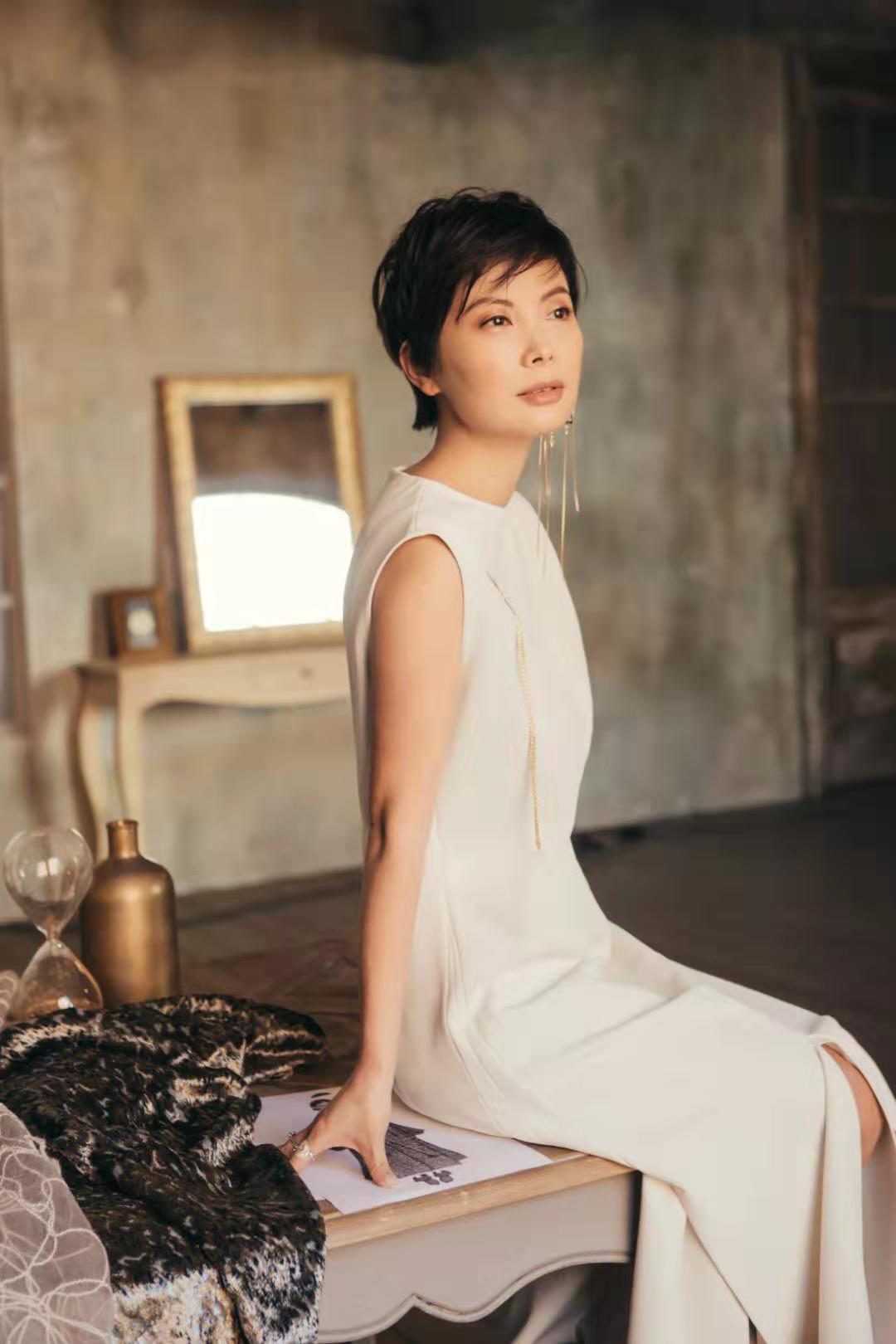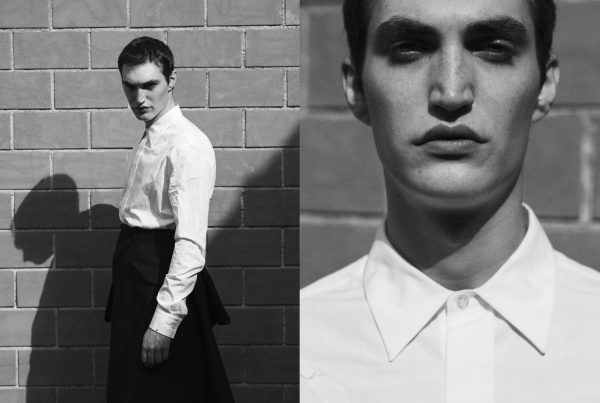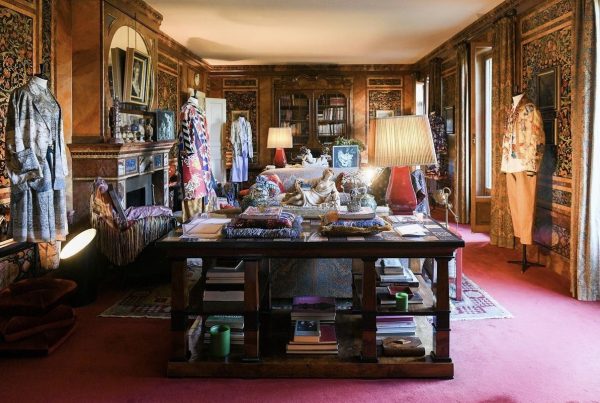Hai un’esperienza pluriennale nel settore della moda e un forte legame con l’Italia, dove hai conseguito un master al Politecnico di Milano. Alla luce del tuo percorso artistico, quali sono ad oggi 3 momenti professionali che vorresti ricordare insieme a noi.
Premetto che la dimensione artistica è una parte importante della mia vita e per questo ci sono molti momenti memorabili dal punto di vista professionale ad essa legati. Il primo che ricordo risale al 1997 quando, non molto tempo dopo essermi laureata, ho preso la decisione di continuare lungo la strada della moda e ho creato il mio marchio che ha preso letteralmente vita in una piccola stanza con diverse macchine da cucire. Penso a quegli anni come ricchi di momenti concitati e faticosi che però, ogni volta che ancora oggi mi capita di ricordare il mio piccolo studio, mi rendono molto contenta e felice. Il secondo momento, decisamente più ufficiale, è stato quando sono stata invitata a partecipare alla settimana della moda di Milano ed è in quell’occasione che ho cominciato ad accorgermi che avevo realizzato il mio sogno. Da lì in poi il mio legame con l’Italia è diventato sempre più forte tanto che mi ha permesso di dare la vera direzione alla mia vita e realizzare nel mio design quel sincretismo culturale tra l’anima dell’Oriente e quella dell’Occidente che lo caratterizza da sempre. Il terzo momento che mi piace ricordare è stato in concomitanza con il capodanno cinese di quest’anno, quanto stavamo definendo la collezione FW20 che avrebbe dovuto sfilare alla Milano Fashion Week. Proprio quando eravamo praticamente sul volo di Milano la situazione epidemica ha rimescolato tutto, destinandomi ad affrontare una grande sfida nella mia carriera artistica.
Hai fondato un museo sulla cultura e la storia della moda e attraverso una fondazione promuovi dei progetti che combattono la povertà. Come nascono questi progetti e quali sono le maggiori sfide?
Esatto, abbiamo creato lo Zhihui Centennial Fashion Museum per rappresentare lo sviluppo della moda cinese negli ultimi 100 anni e abbiamo anche istituito il Fondo Hui per aiutare gli artigiani più tradizionali e supportare, al contempo, le persone più bisognose.
Poiché la moda ha anche una storia, spero che quante più persone al giorno d’oggi capiscano e conoscano la cultura dell’abbigliamento cinese e considerino l’abbigliamento alla stregua di una vera e propria arte da indossare. Questa è l’ intenzione alla base dell’ istituzione del mio Museo.
Per quanto riguarda il fondo Hui, è nato quasi per una coincidenza. Mi sono trovata nell’area di Guizhou per parlare con le ricamatrici locali e ho scoperto che la nostra cultura tradizionale cinese sta scomparendo a causa dell’uso di macchine industrializzate. In quel momento mi sono accorta che dovevo prendere l’iniziativa di assumermi quella che è, a tutti gli effetti, una responsabilità sociale e ho istituito il Fondo Hui, il cui scopo è quello di aiutare la cultura tradizionale cinese a essere perpetuata e sviluppata, progettando, al contempo, la riduzione della povertà, rispettando e aiutando gli artigiani locali.
La sfida più grande nasce dal fatto che, per fare una cosa del genere, è necessario avere investimenti a lungo termine, perché la forza di una singola persona è piccola, e che devo armonizzare costantemente il mio intenso lavoro di progettazione quotidiana delle collezioni con le attività di assistenza pubblica. Questo significa che devo investire continuamente tempo, energia e risorse finanziarie, in modo che più persone possano essere coinvolte in questo progetto vedendo la finalità importante per la quale lo porto avanti.
Il tuo gesto di donare mascherine e visiere facciali protettive alla protezione civile di Milano per affrontare la pandemia è di grande valore per noi italiani. Come ti auguri che il mondo della moda reagisca per la fase della ripresa? Immagini anche collaborazioni particolari?
Di fronte a un’epidemia nessuno di noi dovrebbe avere un atteggiamento passivo: il mondo intero e gli esseri umani sono una grande comunità, quindi quando Milano è stata minacciata dall’emergenza sanitaria, mi è venuto spontaneo dare una mano. Sebbene l’epidemia abbia un impatto enorme sull’industria della moda, la sta anche spingendo a cambiare direzione. Durante questo periodo, non possiamo rilassarci. Questo è una sorta di test sull’umanità e ci spinge a portare avanti uno sviluppo sostenibile e a considerare maggiormente il discorso ambientale, coinvolgendo ogni anello della catena di produzione.
Le passerelle, le trasmissioni e la promozione dei prodotti online potranno essere una possibile alternativa che, inoltre, potrà tenere sempre presente delle variazioni relative allo stato dell’umanità e al suo cambiamento di mentalità del post pandemia.
In Italia la moda ha sempre giocato un grande peso economico sociale e culturale. Da un punto di vista occidentale in Cina, invece, la moda si è sviluppata seguendo tempi e canali diversi. Confermi questa lettura? E cosa puoi dirci sul mercato del fashion cinese di oggi?
In Cina, queste due interpretazioni della moda non sono effettivamente in conflitto. In effetti, molti designer nel mercato della moda cinese integrano il sociale e la cultura tradizionale nell’abbigliamento. Io stessa ho anche integrato la cultura tradizionale cinese nel design dell’abbigliamento HUI, rendendolo non solo una moda, ma anche un mezzo di comunicazione culturale e storico dal forte contenuto emotivo. L’origine e la continuazione della moda nasce nella storia dei tempi, avrà nuove modalità e metodi di presentazione grazie alla continua esplorazione delle persone e allo stesso modo il suo sviluppo è inseparabile dallo sviluppo di tempi e canali che interesseranno il sociale: le abitudini di vita delle persone, la mentalità, le abitudini di consumo e le esigenze stanno cambiando e cambieranno anche la moda.
Noi di SpaghettiMag lavoriamo molto con il concetto di contaminazioni declinato in tutte le sue sfumature feconde. Il tuo stile artistico è frutto di contaminazioni culturali e se si quali?
Integrazione è per me da sempre uno dei tratti caratteristici della mia cultura artistica: mixo le culture più alte di varie nazionalità secondo il mio design e progetto il mio stile così. Nel frattempo utilizzo i diversi stili di Oriente e Occidente integrandoli tra di loro. I designer devono trovare ispirazione dalla vita e devono anche creare progetti che siano più alti della vita, pertanto, nel processo di progettazione, la contaminazione di più culture aiuta il designer ad avere nuove ispirazioni e aiuta anche a diffondere la multiculturalità. Per me, questo è un processo di apprendimento e arricchimento reciproco, oltre che essere uno scambio culturale eccellente per la diffusione della cultura.
Si parla di Italia e di Cina e il riferimento a Marco Polo e alla via della seta è immediato. Siamo due popoli collegati e non solo dalla classica triade: cibo, moda, tecnologia. Pensi che il tuo lavoro possa contribuire ad una nostra maggiore conoscenza reciproca?
Lo scambio tra le culture cinesi e occidentali in realtà contiene una vasta gamma di aspetti: l’abbigliamento, il cibo, l’architettura, le macchine. Per chi lavora nel settore della moda, ovviamente, il desiderio è di utilizzare i propri progetti per promuovere lo scambio e la comprensione delle culture cinesi e occidentali e di altri aspetti, e noi lo stiamo effettivamente facendo. HUI assorbe e integra costantemente le culture cinesi e occidentali nel design di ogni collezione, usando le due culture per creare una fusione che non fa perdere i punti di forza di ognuna di loro ma li mette in equilibrio. Questo comporta anche un miglioramento della comprensione tra le due culture, grazie a una promozione e a uno scambio continuo.
You have many years of experience in the fashion sector and a strong bond with Italy, where you obtained a master’s degree at the Polytechnic of Milan. Thinking about your artistic path, what are today 3 professional moments that you would like to remember with us.
I state that the artistic dimension is an important part of my life and for this there are many memorable moments from a professional point of view related to it. The first one I remember dates back to 1997 when, not long after I graduated, I made the decision to continue on the fashion road and I created my own brand that literally came to life in a small room with several sewing machines. I think of those years as full of excited and tiring moments which, however, every time I still remember my little studio, make me very happy and happy. The second, decidedly more official moment was when I was invited to participate in the Milan Fashion Week and it was on that occasion that I began to realize that I had realized my dream. From then on, my link with Italy has become stronger and stronger, which has allowed me to give true direction to my life and to realize in my design that cultural syncretism between the soul of the East and that of the West which has always characterized it. The third moment that I like to remember was in conjunction with this year’s Chinese New Year, when we were defining the FW20 collection that was supposed to be on the runway at Milan Fashion Week. Just when we were practically on the flight to Milan, the epidemic situation shuffled everything, destining me to face a great challenge in my artistic career.
You founded a museum on the culture and history of fashion and through a foundation you promote projects that fight poverty. How are these projects born and what are the biggest challenges?
That’s right, we created the Zhihui Centennial Fashion Museum to represent the development of Chinese fashion over the past 100 years and we also set up the Hui Fund to help more traditional craftsmen and support the most needy people at the same time. Since fashion also has a history, I hope that as many people nowadays understand and know the culture of Chinese clothing and consider clothing as a real wearable art. This is the intention behind the establishment of my museum. As for the Hui fund, it was born almost by coincidence. I found myself in the Guizhou area to speak with local embroiderers and found that our traditional Chinese culture is disappearing due to the use of industrialized machines. At that moment I realized that I had to take the initiative to take what is, for all intents and purposes, a social responsibility and I set up the Hui Fund, whose purpose is to help traditional Chinese culture be perpetuated and developed, at the same time planning poverty reduction, respecting and helping local craftsmen. The biggest challenge arises from the fact that, in order to do such a thing, it is necessary to have long-term investments, because the strength of a single person is small, and that I have to constantly harmonize my intense daily project design work with the public assistance activities. This means that I have to continually invest time, energy and financial resources, so that more people can be involved in this project seeing the important purpose for which I carry it out.
Your gesture of donating protective face masks and safety shields to Milan’s civil protection to face the pandemic is of great value for all of us Italians. How do you hope that the fashion world will react to the recovery phase? Do you imagine also some special collaborations?
Faced with an epidemic, none of us should have a passive attitude: the whole world and human beings are a large community, so when Milan was threatened by the health emergency, I spontaneously came to help. Although the epidemic has a huge impact on the fashion industry, it is also pushing it to change direction. During this time, we cannot relax. This is a sort of test on humanity and pushes us to carry out sustainable development and to consider more the environmental issue, involving every link in the production chain.
The catwalks, transmissions and the promotion of online products may be a possible alternative which, moreover, can always keep in mind the changes related to the state of humanity and its change in post-pandemic mentality.
In Italy, fashion has always played a great economic, social and cultural role. From a western point of view in China, however, fashion has developed following different times and channels. Do you confirm this reading? And what can you tell us about today’s Chinese fashion market?
In China, these two interpretations of fashion are not actually in conflict. Indeed, many designers in the Chinese fashion market integrate social and traditional culture into clothing. I myself have also integrated traditional Chinese culture into HUI clothing design, making it not only a fashion, but also a cultural and historical means of communication with a strong emotional content. The origin and continuation of fashion was born in the history of the times, will have new ways and methods of presentation thanks to the continuous exploration of people and in the same way its development is inseparable from the development of times and channels that will affect the social: the habits of people’s lives, mentality, consumption habits and needs are changing and fashion will also change.
We at SpaghettiMag work a lot with the concept of métissage and influences declined in all its fruitful nuances. Is your artistic style the result of cultural influence and if so which ones?
Integration has always been one of the characteristic features of my artistic culture for me: I mix the highest cultures of various nationalities according to my design and I design my style like this. In the meantime I use the different styles of East and West integrating them together. Designers must find inspiration from life and must also create projects that are higher than life, therefore, in the design process, the contamination of multiple cultures helps the designer to have new inspirations and also helps to spread multiculturality. For me, this is a process of mutual learning and enrichment, as well as being an excellent cultural exchange for the dissemination of culture.
When talking about Italy and China the reference to Marco Polo and the silk road is immediate. We are two populations connected and not only by the classic triad: food, fashion, technology. Do you think that your work can contribute to our greater mutual knowledge?
The exchange between Chinese and Western cultures actually contains a wide range of aspects: clothing, food, architecture, machines. For those who work in the fashion sector, of course, the desire is to use their projects to promote the exchange and understanding of Chinese and Western cultures and other aspects, and we are actually doing it. HUI constantly absorbs and integrates Chinese and Western cultures into the design of each collection, using the two cultures to create a fusion that does not lose the strengths of each of them but puts them in balance. This also leads to an improvement in understanding between the two cultures, thanks to continuous promotion and exchange.






